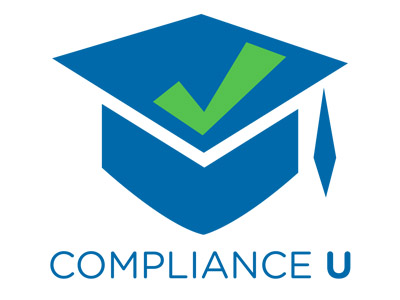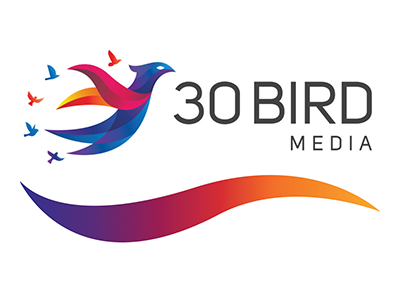 |
Business Communication |
1.00 |
Business communication is best described as the process of sharing information for the benefit of a business. It's generally categorized as being either internal or external. Internal communication, as the name suggests, is when a business shares information within its organization. External communication is when a business shares information outside of its organization, either to clients, customers or vendors.
In this course, you'll learn about the influence of body language, the essentials of business writing, and more, as they relate to communicating in the business world. |
 |
Exploring Four Areas of School-Age Development |
2.00 |
One of the most helpful ways to gain an understanding of the needs and interests of youth between 5 and 12 is to examine their development from four different perspectives: 1) Physical Development, 2) Cognitive Development, 3) Social Development, and 4) Emotional Development. It is important for staff to keep all four of these areas in mind when planning and implementing program activities and experiences. Keeping the four areas of development in mind leads staff to design a balanced set of experiences that nurture and growth and development of the “whole child.” |
 |
Safety Communication and Training Techniques |
1.50 |
This course covers certain safety and logistics measures for the workplace. This includes topics like different types of safety training, creating safety programs with different learners in mind, and how to use various types of media to communicate objectives. |
 |
Cultural Competence for Paraprofessionals |
0.75 |
Culture and cultural elements are essential components of people's identities. Understanding the cultural elements as paraprofessionals allows for a greater appreciation for students and can improve relationships. Cultural elements may include race and ethnicity, gender, and socio-economic status. These elements of culture are not separate from the larger cultural context in which we live and work, especially as paraprofessionals. It is important to recognize that many culturally and linguistically diverse families have specific customs and traditions that may not necessarily be connected to a particular cultural group. By understanding cultural competence, paraprofessionals can provide responsive instruction and support to students from all backgrounds. |
 |
Freelancing 101 |
1.25 |
This course covers the fundamentals of freelancing. Freelancing offers independence, letting individuals choose their projects and schedules, while still providing diverse opportunities to explore different industries and build a flexible career. However, it also entails managing finances, client relationships, and the challenges of inconsistent income. |
 |
MSU BLS Overview |
1.00 |
Monroe County, in Western New York, has obtained its first Mobile Stroke Unit (MSU). "The construction and operating costs of the unit, which was custom built by Frazer Ltd. in Houston, are being funded by UR Medicine and philanthropy, including a lead gift from Elena Prokupets and support from the Del Monte family and other donors in the Rochester community." We gathered members of this talented team to show you how your BLS assessment and treatment of potential stroke patients may be affected in any community that has a similar unit.
Final Exam: This multiple-choice exam is designed to test your knowledge of the material you just reviewed. You have two attempts to gain an 80% or higher on this exam. Please take your time and answer each question carefully. |
 |
Presentation Methods and Debriefing Activities |
2.00 |
There is no "one size fits all" approach to working with children and youth, and this is especially true when it comes to how we present and debrief activities. During this course, participants will understand the importance of the delivery and debriefing of an activity to help children and youth make meaning, as well as some specific methods that can be incorporated into the program right away. |
 |
Understanding the Behavior of Children and Youth |
2.00 |
The development of children and youth can cause them to behave in ways that can be trying for even the most knowledgeable and experienced staff. When staff understands what is driving the behavior, they can help to guide and encourage acceptable behaviors. This course will provide participants with the knowledge and skills necessary to prevent unwanted behavior by meeting the needs of children and youth before they act out. |
 |
Preventing Sexual Harassment and Understanding California Law |
0.50 |
This course will teach California employees how to recognize sexual harassment, defines the rights and responsibilities of employers and employees, and provides an overview of the legal remedies available in sexual harassment lawsuits. |
 |
CompTIA A+ Certification, Core 2 - Exam 220-1102 |
24.00 |
CompTIA A+ Certification Core 2 - Exam 220-1102 provides the basic knowledge needed to install, configure, and support computer software and implement networking. This includes:
- Installing, configuring, and maintaining computer equipment, mobile devices, and software for end users
- Servicing components based on customer requirements
- Understanding networking basics and applying basic cybersecurity methods to mitigate threats
- Properly and safely diagnosing, resolving, and documenting common hardware and software issues
- Applying troubleshooting skills and providing customer support using appropriate communication skills
- Understanding the basics of scripting, cloud technologies, virtualization, and multi-OS deployments in corporate environments
This course maps to the CompTIA A+ Certification Core 2: Exam 220-1102 objectives. An objective map is available for download.
This course assumes that you have basic computer knowledge. |
 |
Cross-Cultural Business Communication: Workplace Culture (Instructor Guide) |
1.00 |
Culture is a way of life established by a group of people and passed on to succeeding generations. People within a culture usually share common values, beliefs, and perspectives and have the same language and communication style. Although people within a culture must live in close proximity while the culture is being established, future generations frequently relocate to other countries or regions. This creates situations of cross-cultural exchanges.
As we become increasingly diverse, there is a growing demand for cross‑cultural communication in the workplace. Technology allows us to communicate with peers across the globe, as though they were sitting in our offices. Efficient and cost-effective travel makes it possible to communicate face-to-face with clients in other countries. In addition, companies seeking diverse and highly skilled employees find a conglomeration of cultures among them. As a result, employers are emphasizing cross-cultural communication in their own organizations to prepare employees to work with diverse co-workers and clients.
In this course you will learn to: discuss the value of culture and the significance of cross-cultural communication in the workplace, and describe the impact of cultural differences on communication, and avoid miscommunication and conflicts that arise due to these difference.
This Instructor's Edition of this course includes notes and suggestions to assist you in presenting the material, whether in an in-person classroom setting, or as an instructor-led online or distance-learning course. It also provides you with the answers to questions found in mid-lesson activities, as well as in the quiz that concludes the course. |
 |
Budgeting: Reviewing Budgets |
1.00 |
A typical budget contains information for a single year and is updated and revised periodically. Each company creates a budget that fits its unique needs. A budget can be used for many purposes, but its primary functions should be to support strategic goals and to help identify when actual results deviate from what was predicted. |
 |
Searching Online |
0.75 |
This course covers the fundamentals of searching online. From using basic features, such as the homepage and address bar, to using "advanced search" to find very specific information, this course will cover it all. |
 |
Zoonotic Disease and Biosecurity |
2.00 |
Every year, zoological organizations are faced by new challenges in maintaining the health of their animal collections. Zoonosis, or disease that can be spread between species, forms one of the greatest threats to the safety of animals, guests, and keepers. Using a case study from a zoonotic disease concern at the San Diego Zoo, you will learn the basics of zoonotic disease identification and prevention, including standard record keeping, best practices, health and safety protocols for keepers, and the understanding of how disease can be spread. |
 |
School-Age Care as a Family Service: Emphasis on Planning Opportunities for Family Involvement |
2.00 |
The foundation for getting parents involved in school-age programs is to keep parents well informed about what is happening in the program. Quality programs also provide parents with opportunities to make suggestions and give feedback on program services through suggestion boxes, feedback forms, and surveys. When parents are encouraged to have input in the program, they develop trust and confidence in the program, and feel a sense of pride and ownership. They are more likely to participate as resourceful partners with program staff when they know their ideas are welcome and valued. Finally, because parents are all different from each other, it's important to provide many different opportunities for them to connect with the program. Staff in quality school-age programs recognize that all parents don't have to be involved in the same way. |
 |
Creativity and Innovation: Personal Creativity |
1.34 |
Creativity is often considered a talent that some people have. Actually, creativity's a skill that everyone can nurture through exercise and practice. You can prepare yourself both mentally and physically to be creative.
In this course you will learn to: prepare yourself mentally and physically to be creative, and use your experiences, innocence, intuition, and sense of adventure to increase your creativity. |
 |
Brick by Brick: Trauma Transport Decisions 4—Pediatrics |
0.50 |
|
 |
Guiding School-Age Children in Groups: Supervision and Boundaries |
1.00 |
When large numbers of children are involved in the program, it is challenging to create and deliver school-age program activities that can meet the needs of all children. The key to success is taking a systematic approach to program planning. It is important for staff to understand how to select appropriate activity options and use effective management strategies that make it possible to offer a balanced variety of simultaneous activity options. This understanding will help staff plan and implement a program that effectively supports, nurtures, and guides individual differences and fosters positive interaction among children in groups. |
 |
Hazard Communication Basic |
1.00 |
This course covers the basics when it comes to hazard communication. The topics will range from the Hazard Communication Standard to the labeling of hazardous materials. |
 |
Job Applications |
1.00 |
In this course, you will learn the basics of completing a job application, including how to choose and secure references, tips for completing applications online, strategies for dealing with background checks with a criminal record, and more. |
 |
Focus on Health and Stress Management |
2.00 |
Every day OST professionals dedicate themselves to caring for and nurturing children, youth, and families. Often OST professionals are so dedicated to serving others, they neglect their own needs. When this happens, OST staff can experience stress that causes them to become overwhelmed, exhausted, frustrated, dissatisfied with job responsibilities, and unappreciated. When OST professionals maintain a healthy balanced lifestyle, they are in a much better position to face the challenges of supporting and nurturing children and families with positive energy, enthusiasm, patience, and empathy. By developing self-awareness; linking their personal and professional goals; developing a healthy balanced lifestyle; and identifying and managing stressors effectively, OST staff can create and maintain a positive sense of well-being that allows them to maximize their ability to build positive relationships with children, parents, colleagues, and others. |
 |
GED: Math - Unit 5: Coordinate Plane |
1.00 |
Welcome to Unit 5: Coordinate Plane. If you've ever graphed points, or read a graph, you've worked with the coordinate plane. In this unit, we'll learn about points, the lines that connect them, and the equations used to create them. |
 |
Commotio Cordis |
1.00 |
Paramedic Instructor Peter Bonadonna discusses his thoughts on Commotio Cordis in an effort to orient EMTs that are not familiar with the phenomena. |
 |
Environmental Systems |
2.00 |
Many of the animals exhibited in zoos and aquariums have very specific environmental requirements that must be met in order to support the life form and better ensure its welfare. This course will explore the unique biological, physiological, and welfare requirements of several varied types of animals; their unique requirements; and the implications for the provision of these requirements. |
 |
Resume Writing |
1.50 |
In this course, you will learn the process of creating a professional resume that stands out from the crowd. You will learn what a resume is, the different types of resumes, and how to write your own. |


























